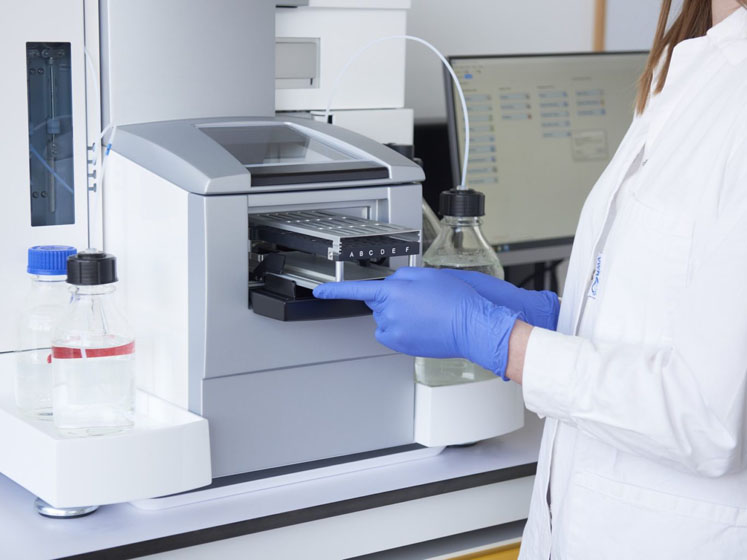Efficient and reliable methods are prerequisites when it comes to successfully identifying targets in the process of drug development. A reliable technique necessitates a sensitive method to analyse membrane proteins — including receptors and low-abundance proteins —under physiological conditions.
The following discourse will explore different technologies in the target identification process, various reasons why the method should be label-free, as well as why it should not require any modification of the drugs or biologics that are being tested.
This understanding will help to ensure that the drug targets what it’s meant to and has the desired effect. The same principle should also be applicable to a variety of molecules and macromolecules, including peptides and nanoparticles, and provide unbiased analysis without relying on literature or prior target information.
While discussing existing methods, we differentiate between two powerful tools in the process of researching biological systems: labelled and label-free methods.
Whereas labelled methods produce a marked version of a compound, label-free methods produce a new compound that’s different from the original; target identification therefore (predominantly) focuses on the modified compound and not the original one. This makes it possible to follow the marked and therefore modified compound in the body and its process of metabolism.
Labelled methods
AfBPP or affinity-based proteome profiling is one of the most frequently used approaches to identify target proteins. Also known as the biochemical affinity purification technique, this method involves the modification of the drug candidate by the addition of a linker to enable its immobilisation.

Such an approach usually requires large amounts of extracts and stringent washing conditions; moreover, the compound must show a high affinity and the target proteins must be fairly abundant in the extracts. With the possibility of drug-target interactions being modified, it can lead to inadequate identification owing to drug steric hindrance.
ABPP: Activity based proteome profiling, an alternative method of AfBPP, in which proteins are labelled by probes that target a conserved mechanistic or structural feature of a set of proteins (such as proteases) enables their purification using beads.
Having said that, what essentially dictates the success of ABPP’s target identification is the quality and specificity of reactive probes. Moreover, non-specific binding turns out to be one of the main limitations of ABPP strategies.
Despite their efficiencies in specific cases, the above methods require tedious optimisations and controls. For instance, labelled affinity based methods are only efficient for high-affinity compounds that target abundant proteins. A variety of other proteins — those that are either low abundant or membranous — are not easily detectable using the methods mentioned above.
There’s also the question of cost-effectiveness; these methods are relatively expensive yet lack the sensitivity to detect certain compounds.
Label-free methods
What’s different here is that, with label-free methods, there is no reliance on labels or markers to identify the compound. The interactions between different molecules in a biological system are studied to examine the physical and chemical properties of a molecule without altering its properties.
Thermal Proteome Profiling (TTP): This method involves incubating cell samples with either a vehicle or a drug and heating them to a range of temperatures to induce protein precipitation (not higher than 40 °C, however, as that would not be physiological).
It should be noted that not all proteins precipitate easily, especially at temperatures that are compatible with the structural integrity of cells; therefore, aggregation as a consequence of unfolding may be incomplete or not happen at all for certain proteins.
DARTS and SPROX
These two approaches do share a similar target identification method as TTP. Whereas DARTS (drug affinity responsive target stability) and SPROX (stability of proteins from rates of oxidation) both rely on the ligand-induced changes in protein stability, they are different in the method they use to test the stability of proteins.
In DARTS, the protein susceptibility to protease-mediated hydrolysis is measured, whereas SPROX makes use of resistance to oxidising agents.
Again, despite their efficiencies in specific cases, these stability based techniques have several limitations when it comes to identifying targets. Indeed, changes in some target protein properties following drug binding — thermodynamic stability or conformation rearrangement, for example — are not always significant enough to render them detectable using this method.

Take the case of the SPROX method, wherein only peptides containing methionine are detected, which represent only a small proportion of the proteome.
A new avenue in target identification: NPOT
The label-free and proprietary nematic protein organisation technique (NPOT) enables the direct isolation and identification of specific macromolecular drug candidate-protein scaffolds that have been implemented in healthy or pathological conditions directly from tissues or cell lines.
It has three main applications: identifying drug targets, elucidating the mode of action and identifying pharmacodynamic biomarkers.
NPOT offers several advantages compared with chemoproteomics and stability shift-based methods, including
- an unbiased approach enabling the identification of targets and the mode of action (MOA)
- sensitive and efficient target identification
- the identification of drug candidate targets in physiological conditions in complex tissues or cell lines.
Additionally, it is also able to identify drug-targeted membrane proteins including GPCRs. This remarkable technique is based on the Kirkwood-Buff molecular crowding and aggregation theory and relies on the ability of a chemical entity — whether a small molecule, protein or high molecular weight compound — to modulate the equilibrium of proteins from a cell or tissue extract in a physiological pH gradient.
A given pH gradient corresponds to the pH values of different cell compartments. This equilibrium then initiates the formation of heteroassemblies that are subsequently isolated and analysed by LC-MS/MS.
It’s fundamentally possible for NPOT to deliver crucial information such as primary target candidates, functional signalling pathways and/or a compound’s MOA from a biopsy pertaining to any patient cohort or pharmacological model.
What’s even more noteworthy is that there is no limitation regarding the type of drug or compound used for the technology as its efficiency has been evident in studies with small molecules, peptides, antibodies and high molecular weight drugs such as macromolecules or nanoparticles.
Even in terms of price, NPOT allows for cost reductions during drug development provides assurance when making important decisions. Preclinical and clinical researchers gain from NPOT as it enables them to advance their drug candidate characterisation and accelerate therapeutics with more confidence through high-quality service.
